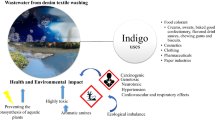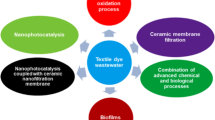Abstract
Microbiologically influenced corrosion (MIC) is a major problem in various industries such as oil and gas, and water utilities. Billions of dollars are lost to microbiologically influenced corrosion (MIC) each year in the US. The key to MIC control is biofilm mitigation. Sulfate-reducing bacteria (SRB) are often the culprits. They are also involved in souring and biofouling. SRB biofilms are notoriously difficult to eradicate. Due to environmental concerns and increasing costs, better biocide treatment strategies are desired. Recent studies suggested that d-tyrosine and some other d-amino acids may signal biofilm dispersal. Experimental results in this work indicated that d-tyrosine is an effective biocide enhancer for tetrakis hydroxymethyl phosphonium sulfate (THPS) that is a green biocide. Desulfovibrio vulgaris (ATCC 7757) was used in biofilm prevention and biofilm removal tests. It was found that 100 ppm d-tyrosine alone and 50 ppm THPS alone were both ineffective against the SRB biofilm. However, when 1 ppm d-tyrosine was combined with 50 ppm THPS, the synergy between the two chemicals successfully prevented the establishment of the SRB biofilm on C1018 mild steel coupon surfaces in batch treatment tests. It also eradicated established SRB biofilms from coupon surfaces in both 1 and 3-h shock treatment tests.



Similar content being viewed by others
References
Bae HS, Lee SG, Hong SP, Kwak MS, Esaki N, Soda K, Sung MH (1999) Production of aromatic d-amino acids from a-keto acids and ammonia by coupling of four enzyme reactions. J Mol Catal B-Enzym 6:241–247
Cava F, Lam H, de Pedro MA, Waldor MK (2011) Emerging knowledge of regulatory roles of d-amino acids in bacteria. Cell Mol Life Sci 68:817–831
Daniels L, Belay N, Rajagopal BS, Weimer P (1987) Bacterial methanogenesis and growth from CO2 with elemental iron as the sole source of electrons. Science 237:509–511
Downward BL, Talbot RE, Haack TK (1997) TetrakisHydroxymethylPhosphonium Sulfate (THPS) a new industrial biocide with low environmental toxicity. Corrosion/1997 Paper No. 401, NACE International, Houston, TX
Evans RC, Holmes CJ (1987) Effect of vancomycin hydrochloride on Staphylococcus epidermidis biofilm associated with silicone elastomer. Antimicrob Agents Ch 31:889–894
Fang HHP, Xu LC, Chan KY (2002) Effects of toxic metals and chemicals on biofilm and biocorrosion. Water Res 36:4709–4716
Friedman M (1999) Chemistry, nutrition, and microbiology of d-amino acids. J Agricultural Food Chem 47:3457–3479
Galkin A, Kulakova L, Yamamoto H, Tanizawa K, Tanaka H, Esaki N, Soda K (1997) Conversion of α-keto acids to d-amino acids by coupling of four enzyme reactions. J Ferment Bioeng 83:299–300
Gristina AG, Hobgood CD, Webb LX, Myrvik QN (1987) Adhesive colonization of biomaterials and antibiotic resistance. Biomaterials 8:423–426
Gu T, Xu D (2010) Demystifying MIC mechanisms. Corrosion/2010 Paper No. 10213, NACE International, Houston, TX
Gutierrez O, Park D, Sharma KR, Yuan Z (2009) Effects of long-term pH elevation on the sulfate-reducing and methanogenic activities of anaerobic sewer biofilms. Water Res 43:2549–2557
Hills GM (1949) Chemical factors in the germination of spore bearing aerobes; the effect of yeast extract on the germination of Bacillus anthracis and its replacement by adenosine. Biochem J 45:353–362
Javaherdashti R (1999) A review of some characteristics of MIC caused by sulfate-reducing bacteria: past, present and future. Anti-Corros Method M 46:173–180
Jiang G, Gutierrez O, Sharma KR, Keller J, Yuan Z (2011a) Optimization of intermittent, simultaneous dosage of nitrite and hydrochloric acid to control sulfide and methane production in sewers. Water Res 45:6163–6172
Jiang G, Gutierrez O, Yuan Z (2011b) The strong biocidal effect of free nitrous acid on anaerobic sewer biofilms. Water Res 45:3735–3743
Jones C, Downward B, Edmunds S (2012) THPS: a review of the first 25 years, lessons learned, value created and visions for the future. Corrosion/2012 Paper No. C2012-0001505, NACE International, Salt Lake City, UT
Kolodkin-Gal I, Romero D, Cao S, Clardy J, Kolter R, Losick R (2010) d-amino acids trigger biofilm disassembly. Science 328:627–629
Lam H, Oh DC, Cava F, Takacs CN, Clardy J, de Pedro MA, Waldor MK (2009) d-Amino acids govern stationary phase cell wall remodeling in bacteria. Science 325:1552–1555
Mah TC, O’Toole GA (2001) Mechanisms of biofilm resistance to antimicrobial agents. Trends Microbiol 9:34–39
McGinley HR, Enzien MV, Hancock G, Gonsior S, Miksztal M (2009) Glutaraldehyde: an understanding of its ecotoxicity profile and environmental chemistry. Corrosion/2009 Paper No. 09405, NACE International, Houston, TX
Nickel JC, Ruseska I, Wright JB, Costerton JW (1985) Tobramycin resistance of Pseudomonas aeruginosa cells growing as a biofilm on urinary tract catheter. Antimicrob Agents Ch 27:619–624
Prosser BL, Taylor D, Dix BA, Cleeland R (1987) Method of evaluating effects of antibiotics on bacterial biofilm. Antimicrob Agents Ch 31:1502–1506
Takahashi E, Furui M, Shibatani T (1997) D-Amino acid production from racemic amino acids by a microbial asymmetric degradation. Biotechnol Tech 11:913–916
Thauer RK, Stackebrandt E, Hamilton WA (2007) Energy metabolism phylogenetic diversity of sulphate-reducing bacteria. In: Barton LL, Hamilton WA (eds) Sulphate-reducing bacteria: environmental and engineered systems. Cambridge University Press, Cambridge, pp 1–37
Till BA, Weathers LJ, Alvarez PJJ (1998) Fe(0)-supported autotrophic denitrification. Environ Sci Technol 32:634–639
US EPA (1997) THPS biocides: a new class of antimicrobial chemistry (1997 Designing Greener Chemicals Award), http://www.epa.gov/greenchemistry/pubs/pgcc/winners/dgca97.html. Last Accessed on Feb 27, 2012
Vance I, Thrasher DR (2005) Reservoir souring: mechanism and prevention. In: Ollivier B, Magot M (eds) Petroleum microbiology. ASM Press, Washington, DC, pp 123–142
Videla HA (2002) Prevention and control of biocorrosion. Int Biodeterior Biodegrad 49:259–270
Wade D, Boman A, Wahlin B, Drain CM, Andreu D, Boman HG, Merrifield RB (1990) All-d amino acid-containing channel-forming antibiotic peptides. PNAS 87:4761–4765
Walsh D, Pope D, Danford M, Huff T (1993) The effect of microstructure on microbiologically influenced corrosion. J Min Met Mat S 45:22–30
Wen J, Zhao K, Gu T, Raad I (2009) A green biocide enhancer for the treatment of sulfate-reducing bacteria (SRB) biofilms on carbon steel surfaces using glutaraldehyde. Int Biodeterior Biodegrad 63:1102–1106
Wen J, Zhao K, Gu T, Raad I (2010) Chelators enhanced biocide inhibition of planktonic sulfate-reducing bacterial growth. World J Microb Biot 26:1053–1057
Xu D, Gu T (2011) Bioenergetics explains when and why more severe MIC pitting by SRB can occur. Corrosion/2011 Paper No. 11426, NACE International, Houston, TX
Xu H, Liu Y (2011) d-Amino acid mitigated membrane biofouling and promoted biofilm detachment. J Membrane Sci 376:266–274
Xu D, Wen J, Fu W, Gu T, Raad I (2012) d-amino acids for the enhancement of a binary biocide cocktail consisting of THPS and EDDS against an SRB biofilm. World J Microb Biot 28:1641–1646
Yamanaka T, Aso I, Togashi S, Tanigawa M, Shoji K, Watanabe T, Watanabe N, Maki K, Suzuki H (2002) Corrosion by bacteria of concrete in sewerage systems and inhibitory effects of formates on their growth. Water Res 36:2636–2642
Zhang L, Keller J, Yuan Z (2009) Inhibition of sulfate-reducing and methanogenic activities of anaerobic sewer biofilms by ferric iron dosing. Water Res 43:4123–4132
Author information
Authors and Affiliations
Corresponding author
Rights and permissions
About this article
Cite this article
Xu, D., Li, Y. & Gu, T. A synergistic d-tyrosine and tetrakis hydroxymethyl phosphonium sulfate biocide combination for the mitigation of an SRB biofilm. World J Microbiol Biotechnol 28, 3067–3074 (2012). https://doi.org/10.1007/s11274-012-1116-0
Received:
Accepted:
Published:
Issue Date:
DOI: https://doi.org/10.1007/s11274-012-1116-0




